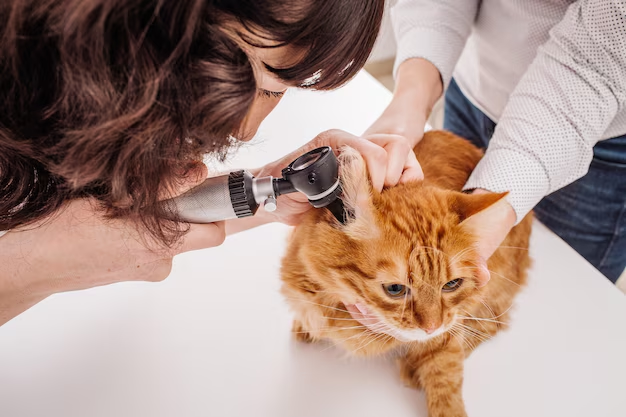How to Recognize Cataracts in Your Dog: A Comprehensive Guide
As a pet owner, your dog's well-being is paramount. When you notice something unusual, like changes in their eyes, it can be concerning. One of the more common eye problems in dogs is cataracts. But how do you really know if your dog has cataracts? This guide will delve into the signs, causes, and management options for cataracts in dogs, while ensuring you have a complete understanding of this condition without crossing into medical advice territory.
🐶 What Are Cataracts in Dogs?
Cataracts occur when the crystalline lens of the eye becomes clouded, affecting vision. In dogs, cataracts can develop for various reasons, impacting their daily lives and interactions. While many dog owners might mistake normal aging changes for cataracts, understanding the specifics can help you seek appropriate care for your pet.
Why Cataracts Develop
- Genetic Factors: Some breeds are more predisposed to cataracts. Breeds like the Cocker Spaniel, Poodle, and Siberian Husky are known for genetic susceptibility.
- Age: As dogs age, they can naturally develop cataracts. It's similar to how people often require reading glasses as they grow older.
- Disease-Related Causes: Conditions such as diabetes can expedite cataract formation.
Types of Cataracts
- Immature Cataracts: Partially clouded lens but some vision remains.
- Mature Cataracts: Fully clouded lens, causing significant vision loss.
- Hypermature Cataracts: With time, the lens can shrink and become more opaque.
🔍 Signs Your Dog Might Have Cataracts
Knowing the symptoms of cataracts allows for early detection and management, potentially improving your dog's quality of life.
Observable Signs
- Cloudy Eyes: Noticeable opaqueness in one or both eyes.
- Vision Impairment: Bumping into objects or hesitancy in unfamiliar areas can indicate vision issues.
- Behavioral Changes: Increased clinginess, anxiety, or a decrease in their usual playful nature.
Differentiating Between Cataracts and Normal Aging
- Nuclear Sclerosis: A grayish-blue haze due to aging is common and not as severe as cataracts, often not requiring intervention.
- Consistency: Cataracts are typically more opaque and distinct, affecting vision more severely.
Symptoms to Monitor
| Symptom | Indicator |
|---|---|
| Cloudy or bluish eyes | Persistent clouding in the eye lens |
| Clumsiness | Increased frequency of bumping into objects |
| Eye irritation | Redness, blinking, or pawing at the eyes |
| Change in play habits | Less interest in toys, especially fetch |
🩺 How Are Cataracts Diagnosed?
While recognizing symptoms is critical, professional diagnosis ensures accurate identification.
Veterinary Examination
- Direct Ophthalmoscopy: A vet uses light to examine the retina and lens health.
- Slit Lamp Exam: Provides a detailed view of the eye's anatomy.
- Tonometry: Measures eye pressure, important in ruling out glaucoma.
🏡 Managing Cataracts at Home
Although surgery is an option for many dogs, there are ways to create a comfortable environment at home.
Creating a Safe Space
- Consistent Layout: Keep furniture and important items in the same places.
- Lighting: Ensure well-lit areas, particularly in pathways your dog frequently uses.
Encouraging Safe Play
- Tactile Toys: Introduce toys that make noise or produce scents to help them navigate playtime.
- Gentle Exercise: Activities in a controlled environment to prevent injuries.
Dietary and Lifestyle Considerations
- Nutritional Support: Diets rich in antioxidants can support eye health.
- Regular Check-ups: Frequent vet visits for overall health monitoring.
🛠️ Treatment Options
For many pampered pets, intervention through surgery can improve life quality significantly.
Surgical Considerations
- Phacoemulsification: A common procedure using ultrasound waves to break up and remove the cloudy lens.
- Lens Replacement: Often an option alongside cataract surgery to restore vision clarity.
Evaluating Candidacy for Surgery
- Not all dogs are suitable candidates. Factors such as age, overall health, and surgical risks impact the decision.
🌟 Supporting Senior Dogs with Vision Changes
Senior dogs adapt surprisingly well to vision changes with supportive care.
Practical Tips for Vision-Impaired Dogs
- Consistent Routines: Helps dogs navigate daily activities with ease.
- Verbal Cues: Training with sound and voice to support their new way of interacting with the world.
Key Takeaways for Care:
- 🏠 Consistency: Maintain a stable environment.
- 🎾 Interactive Toys: Use balls with bells or treat-dispensing toys.
- ✅ Routine Check-ups: Regular vet visits can capture changes early.
- 🚪 Barrier-Free Pathways: Clear walkways of obstacles.
Understanding how to recognize and respond to cataracts in dogs empowers you to make informed decisions about your furry friend's health. By staying alert to changes in your dog's behavior and maintaining regular veterinary care, you ensure their best chance at a comfortable, happy life, no matter what vision challenges they may face.
